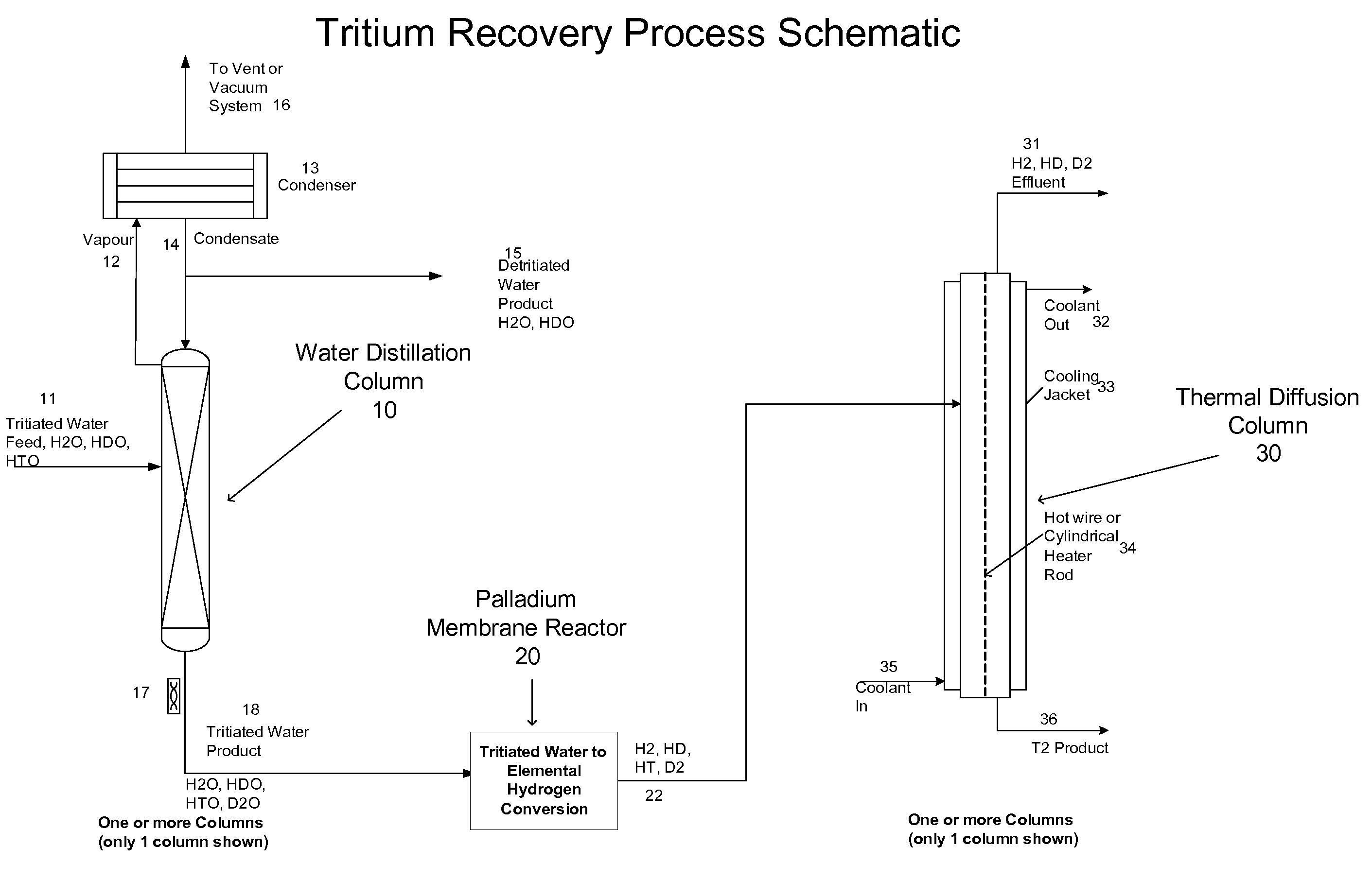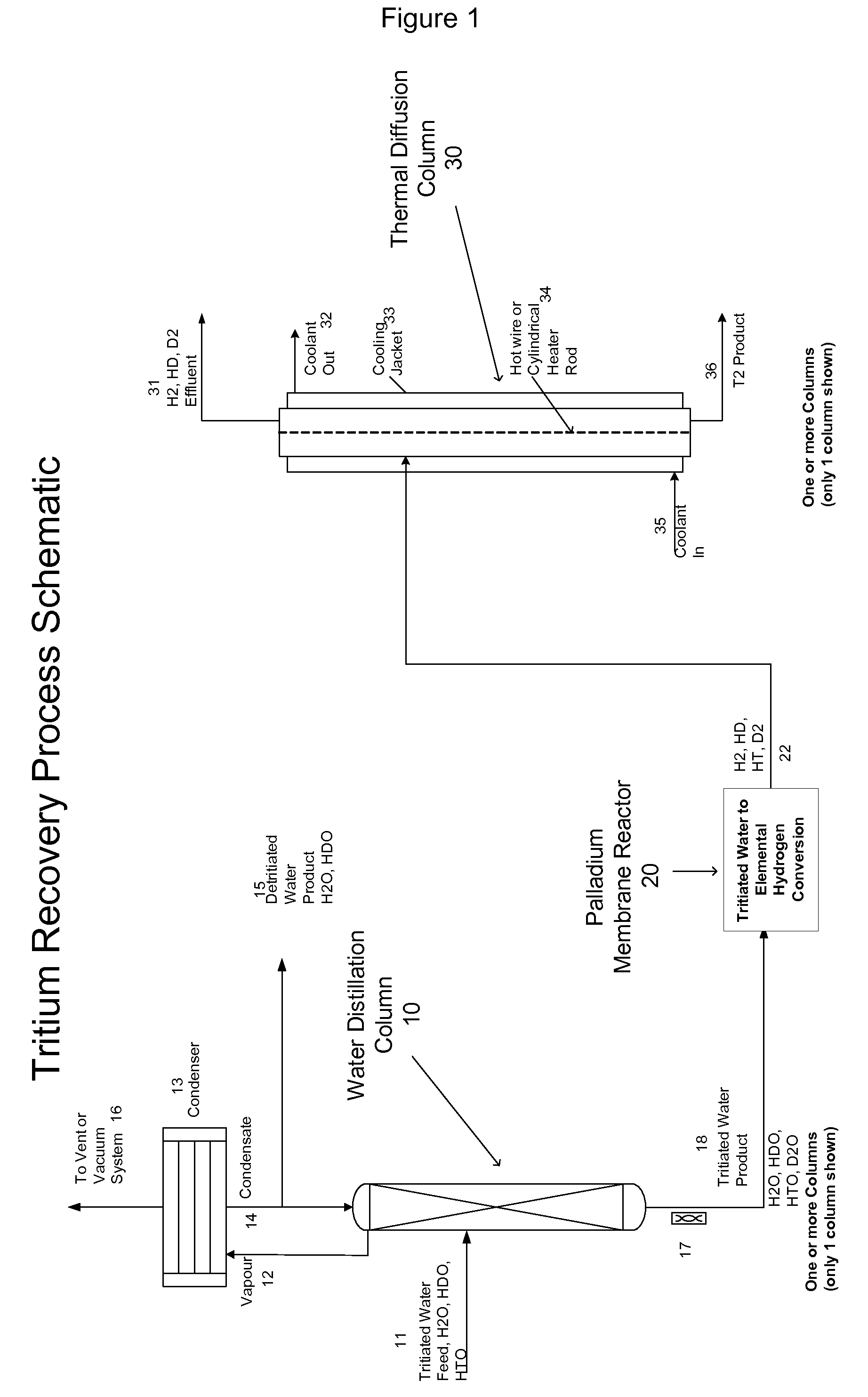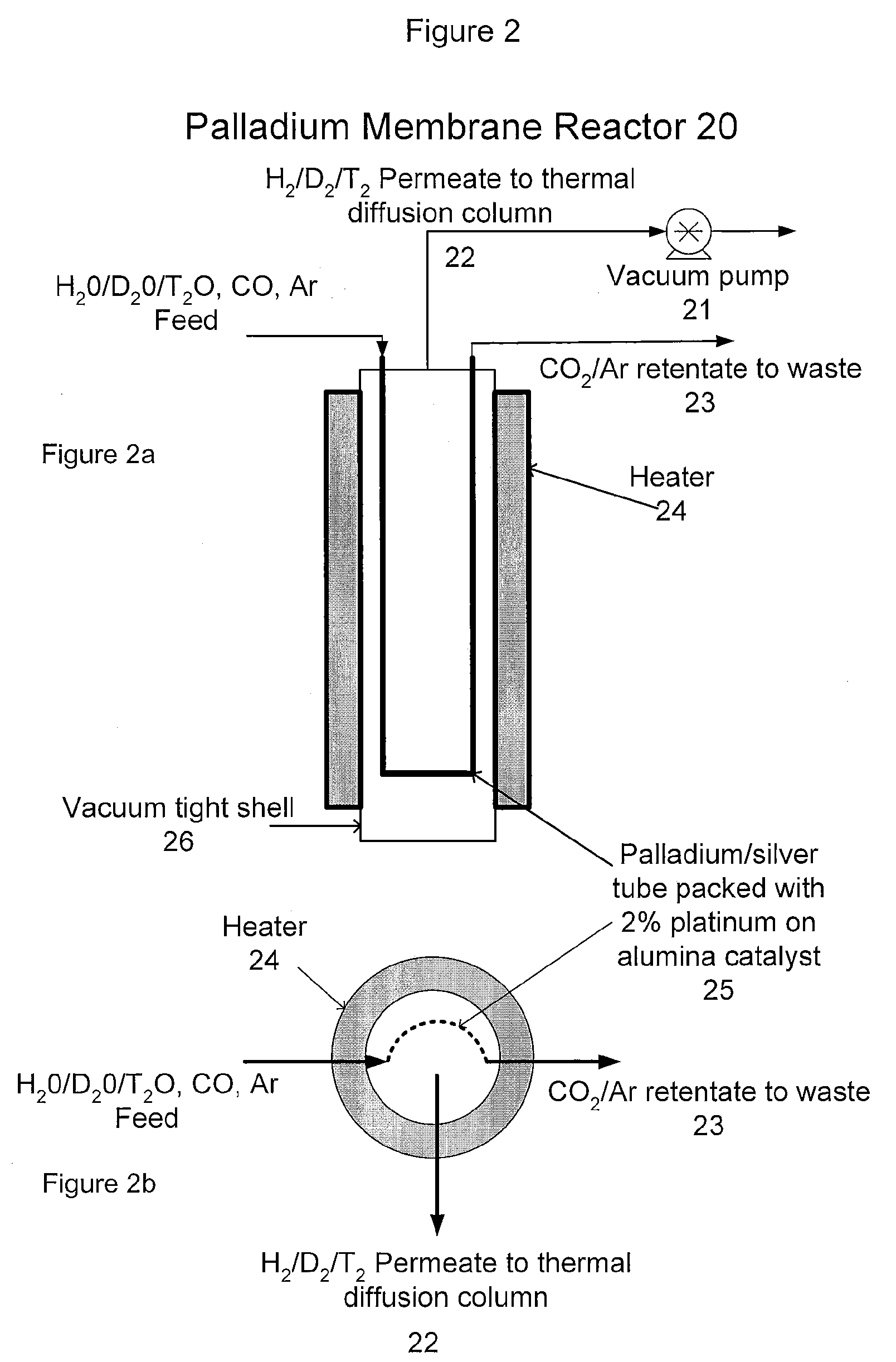Process for tritium removal from light water
a tritium isotope and light water technology, applied in separation processes, hydrogen isotopes, distillation in boilers/stills, etc., can solve the problem that the process requires a significantly smaller elemental hydrogen isotope inventory, and achieves simple and more economical operation, simple start-up, shutdown, and reduced hazards
- Summary
- Abstract
- Description
- Claims
- Application Information
AI Technical Summary
Benefits of technology
Problems solved by technology
Method used
Image
Examples
Embodiment Construction
[0026]Detailed descriptions of the preferred embodiment of the present invention are provided herein. It is to be understood, however, that the present invention may be embodied in various forms. Therefore, specific details disclosed herein are not to be interpreted as limiting, but rather as a basis for the claims and as a representative basis for teaching one skilled in the art to employ the present invention in virtually any appropriately detailed system, structure or manner.
[0027]In accordance with one embodiment of the present invention, FIG. 1 shows a conceptual process flow diagram for a water detritiation system according to one embodiment of the present invention. In a first stage of the process, a tritiated water feed (11) is fed into a water distillation column (10) at a point where the concentration in the column is approximately the same as the feed concentration. The function of the water distillation system is to concentrate tritiated water produced from upstream proc...
PUM
| Property | Measurement | Unit |
|---|---|---|
| temperature | aaaaa | aaaaa |
| diameter | aaaaa | aaaaa |
| height | aaaaa | aaaaa |
Abstract
Description
Claims
Application Information
 Login to View More
Login to View More - R&D
- Intellectual Property
- Life Sciences
- Materials
- Tech Scout
- Unparalleled Data Quality
- Higher Quality Content
- 60% Fewer Hallucinations
Browse by: Latest US Patents, China's latest patents, Technical Efficacy Thesaurus, Application Domain, Technology Topic, Popular Technical Reports.
© 2025 PatSnap. All rights reserved.Legal|Privacy policy|Modern Slavery Act Transparency Statement|Sitemap|About US| Contact US: help@patsnap.com



